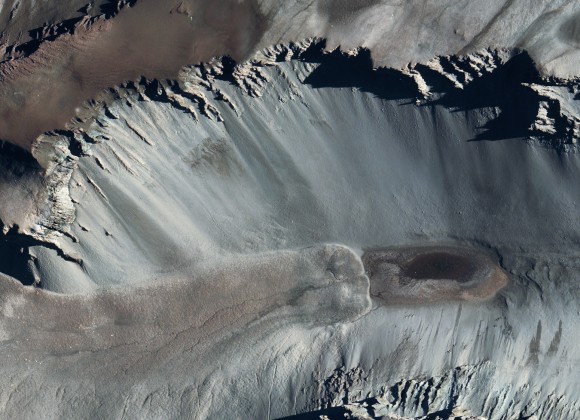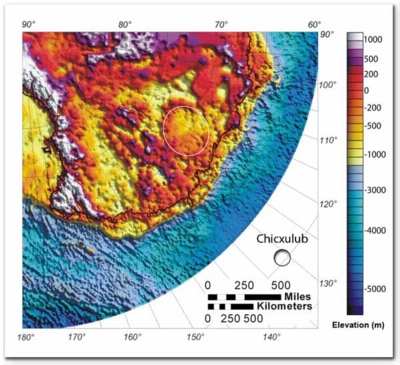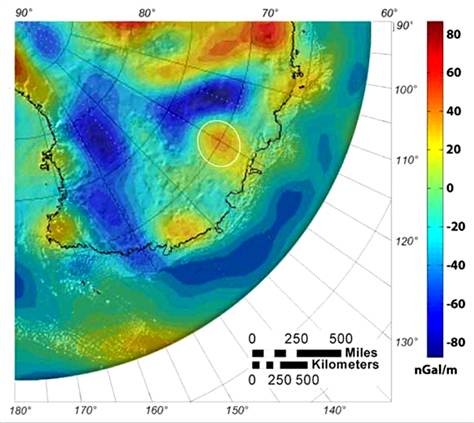Asteroid impacts in Antarctica

In a controversial study, gravity maps of the Antarctic continent have revealed what could be multiple asteroid impact sites.
Gravity anomalies in Antarctica might mark spots where hundreds of thousands of years ago the frozen continent was struck by giant meteorites or fragments of a comet. These, scientists suggest, would have punched deep into the crust, shattering rock and producing zones of slightly lower gravity waiting to be found by modern instruments. Such instruments, carried aboard satellites, airplanes, and snow machines, can measure the Earth's gravity field with remarkable precision.
"The gravity meter we used
that if I should set it on a desk and read the gravity from it, then set it on the floor, I can detect the difference ," says John Weihaupt a geophysicist at the University of Colorado.
As far back as 1976, Weihaupt found a large region of low gravity in Antarctica's Victoria Land that he believes to be a meteor impact crater, at least 243 km across – about three times as wide as America's Chesapeake Bay, also believed to have been formed by an asteroid impact.

But in new gravity maps of the entire continent published in the journal Lithosphere, Weihaupt's team found 14 additional such anomalies, which they think might mark the sites of additional impacts. The anomalies could be caused by other under-ice features, such as buried mountains or tectonic trenches.
But there is no evidence for such features beneath this part of Antarctica, Weihaupt's team said. Rather, they appear to be places where the impact not only created a depression but also reduced the rock's density (and therefore its gravity) by shattering it into rubble, known as breccia.
Weihaupt thinks the number of anomalies means ancient Antarctica may have been peppered with a shotgun blast of space rocks up to 2 km across. Furthermore, the anomalies are arrayed in an ellipse, with the largest at one end and the smallest at the other.

"This is exactly the pattern one gets from the distribution of meteorite craters in a multiple impact event," he said – i.e., a situation in which a large asteroid or comet breaks up before impact.
When did the impact occur? "That's a tricky question," Weihaupt says. A definitive answer would require drilling all the way through the ice to the underlying rocks. (COSMOS Magazine)

Haha could we get this on CNN??